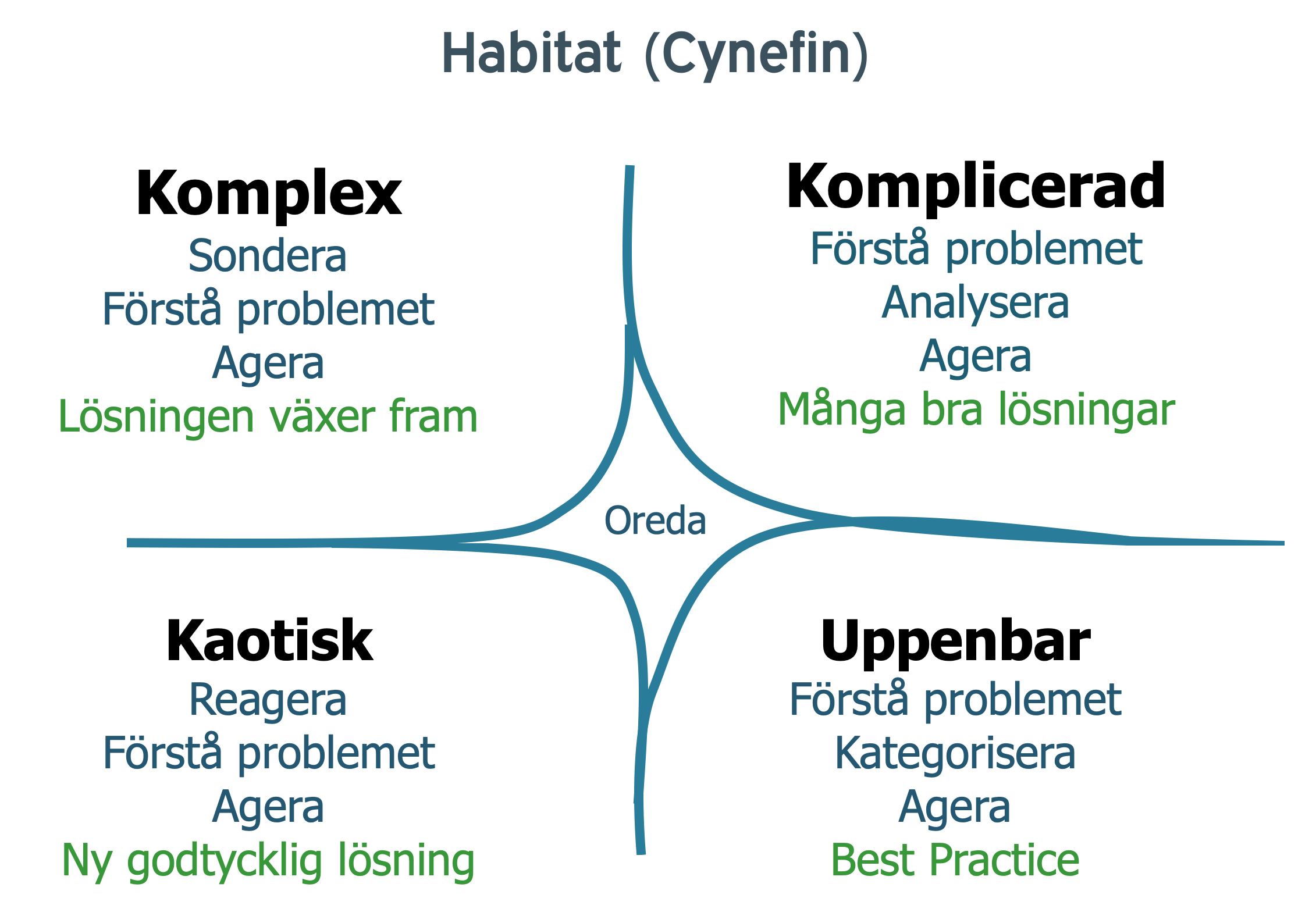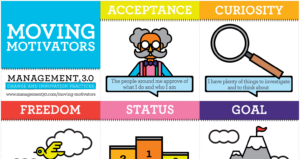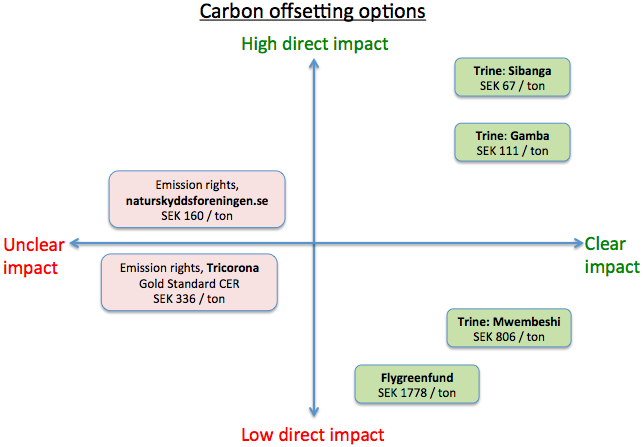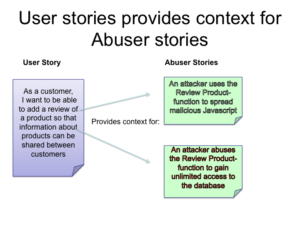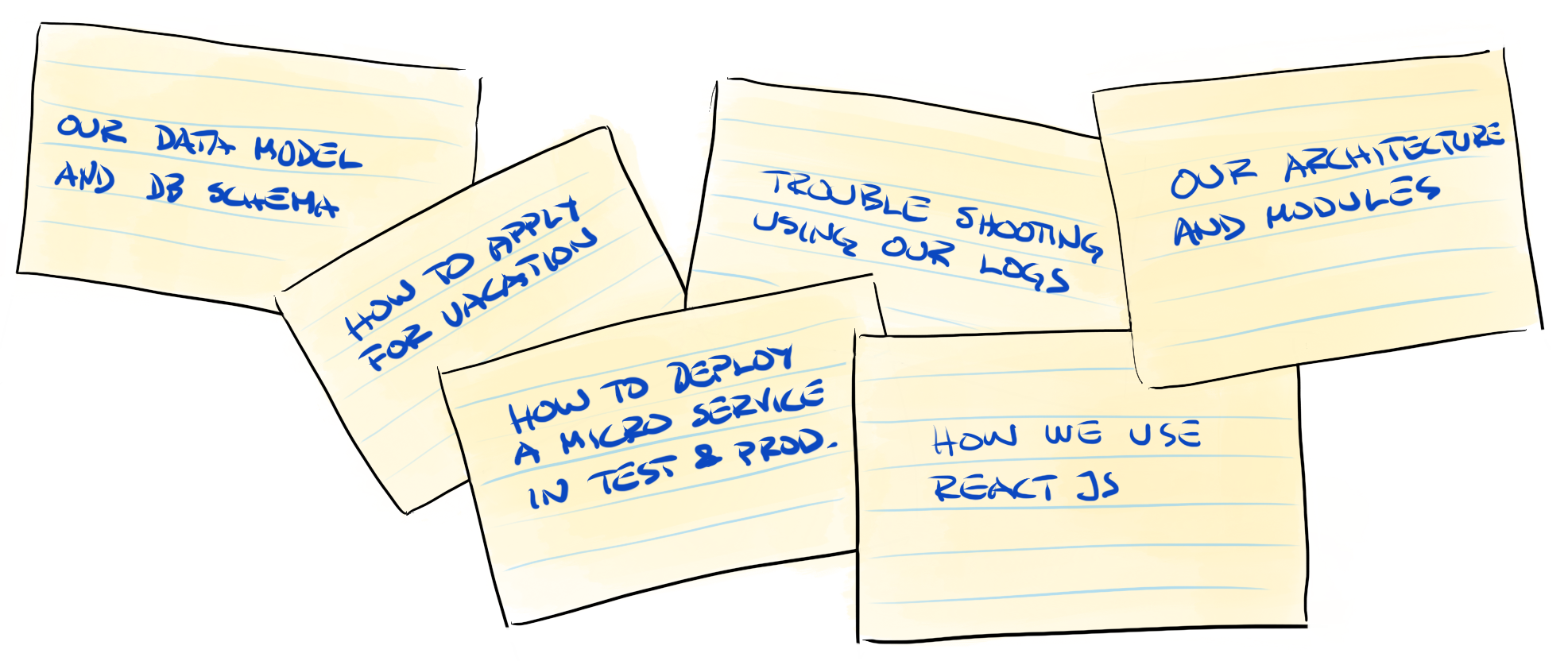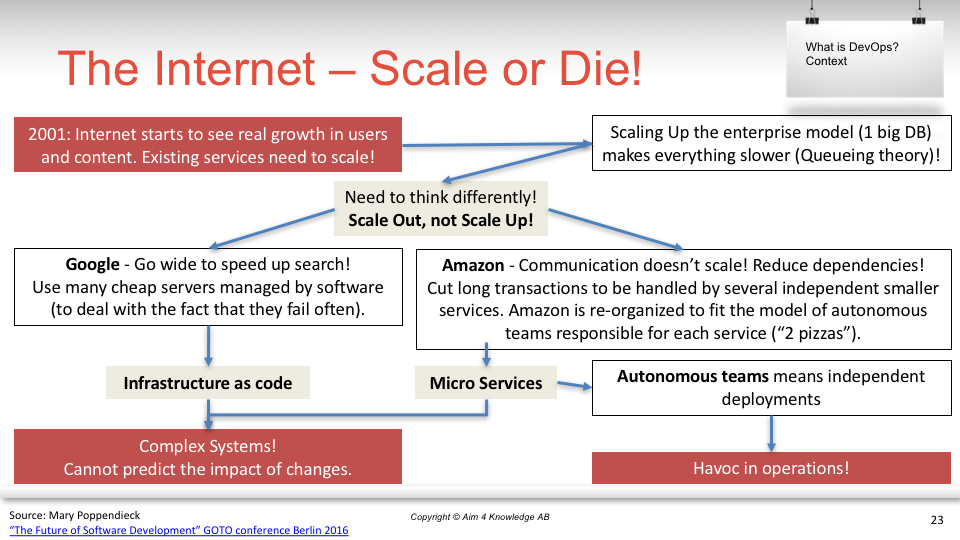So your organisation is going ”agile” and talking about ”collaborations” between teams? You, as the big boss, are starting to feel powerless and not in control of the efficiency of YOUR teams? Let me give some tips on how to turn that around so all progress can be traced back to you. I mean, as their mighty leader, you do deserve all the credit for their work.
Crisp's BlogPage 8
from the Crisp Consultants
Scaling Agile @ LEGO and Spotify – my talk at EA träff
Here are my slides from today’s talk “Scaling Agile @ LEGO and Spotify” at EA träff in Stockholm (EA = enterprise architecture). Fun to hang out with enterprise architects and learn what that’s all about 🙂
Some sample slides from my talk:
Real World SAFe – Leapfrogging a successful waterfall company into Scaled Agile
How do you leapfrog a successful waterfall company into Scaled Agile? How do you transition into Agile when you have legacy? When your company is already successful in what it does and when it carries legacy, transitioning into Agile is a more complex challenge than starting off Agile in a green field environment. After all,
Continue readingThe Future of Work
The Future of Work is already here, it is just only unevenly distributed.
There is a crisis in the world of work. The pace of change in our environment is faster than the internal change in most organizations. Many organizations are struggling to keep up and are risking becoming obsolete. Gallup’s report on engagement crisis with only 32% of US workforce and 13% of the worldwide workforce engaged. Companies in the S&P 500 Index in 1958 stayed in the index an average of 61 years but has fallen to 18 years in 2012. Why is this?
When it comes to our work-life most of our organizations are still designed based on principles from the industrial age. Separation of thinking, planning, and management from the work. Organizations are designed to be top-down hierarchical and inside out rather than outside-in, customer-centric, and decentralized. There is mechanistic view rather than an organic, natural and Agile view of organizations.
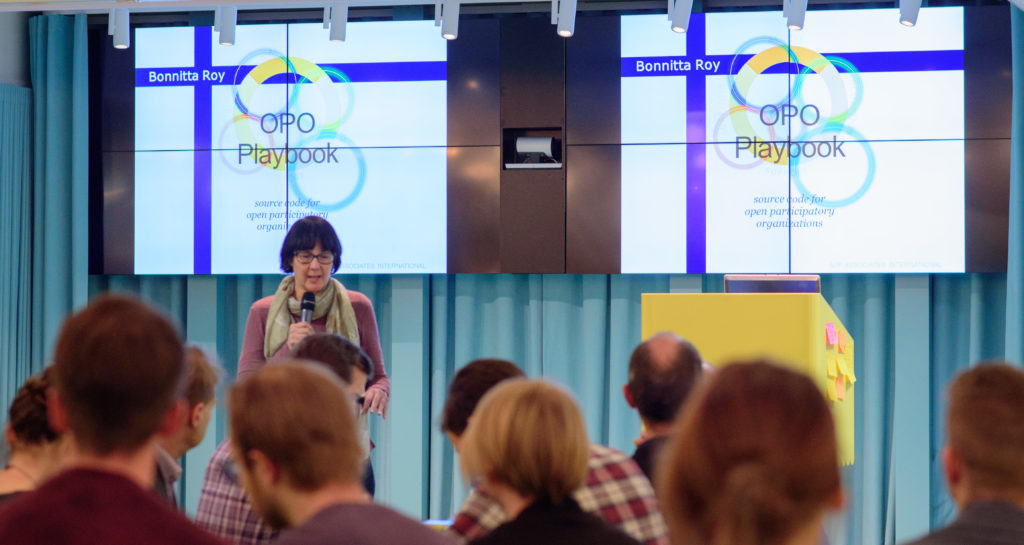
This new complex world will put completely new demands on leadership, organizing and just everyday living. We are living in truly exciting times. How can we create organizations that are fit for the future and more human? How can we re-invent organizations so that we will free up people’s potential for doing good? Many of these organizations are also based on triple bottom line principle: “Profit, People, and Planet”. This is my passion and I am super excited about it right now. Continue reading
UX – It’s obvious, right?: Part 3
In the talk I gave at Agila Sverige in June, I brought up misconceptions about UX I’ve encountered during my years in the IT business. One of these is that it’s only the UX people (and possibly the PO) who need to meet the users. In this post I’ll discuss why this not true, but also how meeting the users can make a real difference in focus and motivation for the team.
Is train a feasible alternative to flying?
As I write this I’m sitting on a train headed back to Sweden, pondering the result of a year’s experimentation with travelling by train instead of flying. Is this an effective way to reduce my carbon footprint? The jury is in! Read on. One common rallying cry among climate advocates is to fly less (or
Continue readingAgile – where are we at? My slides from USI conference, Paris.
Here are the slides for my talk “Agile, where are we at?” from USI conference in Paris (USI = “unexpected sources of inspiration”) in June. One of the coolest conferences I’ve ever attended!

My talk was an attempt to take a step back and look at the big picture, and also speculate about the future of agile. I was also interviewed a couple of times, and the talk was also recorded. Here are links:
- Interview “Agile is about taming complexity”
- Interview “Etre agile, c’est savoir dompter la complexité“
- Interview “L’évolution de la culture agile en entreprise“
- Video recording of the talk
2 of my kids tagged along on the trip, we took the train to make it extra adventurous (and also to mind the climate). It’s a long way (24 hours each way), but we made good use of the time!
7 Misconceptions about TDD
Here are some common misconceptions about TDD. I call them “myths” here, for short.
If this feels like talking to the dentists about your teeth, you are not alone. When I talk about tests sometimes people gets embarrassed about their habits, “I know you’re right but …”.
UX – It’s obvious, right?: Part 2
In June I gave a talk at a conference about things that I, as a UX professional, find obvious that I have noticed that others don’t. After giving the talk, I decided to also put it down in writing as a series of blog posts. This is part 2 of that series and talks about that even if you hire usability experts, they still need to meet the users.
UX – It’s obvious, right?: Part 1
I did a talk at the local conference Agila Sverige in June about things that I, as a UX professional, find obvious about UX, but that I have discovered that other professions might not. I actually felt really nervous giving the talk, because I feared that I had been mistaken and the things actually were obvious to everyone. I needn’t have worried…
The Ship – who will you be?
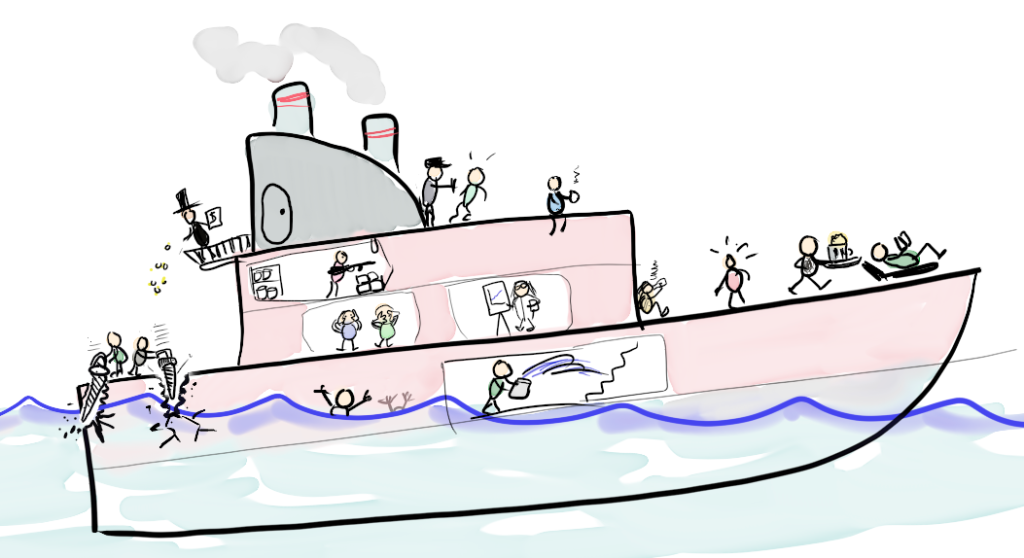
The Ship
For years I was hearing an increasing murmur and rumours about some kind of problem with the ship. Finally I decided to take a closer look, went up to deck, leaned out and looked down, and…. oh sh*t…. this ship is sinking! It’s tilting, some cabins are already flooded, with people frantically crowding the hallways and staircases trying to get to higher deck. It’s happening slowly, very slowly. In fact, the ship won’t be completely sunk during my lifetime probably. But my kids, and grandkids…. Darn!
So what’s going on here? I start roaming around, talking to people.Continue reading
Trading control for great products – the Telia TV team example
Adapting to accelerating change
In a world where the speed of change seems to accelerate almost exponentially, it is only natural that an organization’s way of working must be constantly challenged and improved – especially in the highly competitive media business.
This text, which was inspired by winning an award (we will return to that), is the outcome of a joint effort between Michael Göthe, Agile Coach at Crisp, and Jens Abrahamsson, Agile Coach at Telia Company’s TV & Media Backend department. In it, we describe parts of the always-ongoing journey towards a more lean and agile way of working at the Telia TV team.
As always when looking back at a complex change process it is not possible to copy what we did but our intention is to share useful learnings, practices, and tools that can inspire you on your change journey, in your context.

Codekvast soon available as a Heroku add-on
Codekvast is a tool for detecting Truly Dead Code in your Java application. Truly Dead Code is code that is in production, but has not been used for a significant time. Codekvast has been lurking in the spare-time realm for too long. Now the project has eventually been granted some full-time development effort, with the initial
Continue readingFriendly Guide to Climate Change (and what you can do about it)
I’ve spent ALOT of time the past few months trying to understand climate change and global warming, and how to effectively contribute. I’ve dug through 1000-page scientific reports, talked to experts, and basically tried to digest as much information as possible. I was surprised by how little I knew before. I’m convinced that, the more people who really understand the problem, the more effectively we’ll be able to solve it (or at least mitigate it).
So here’s a short animated video summarizing the whole issue. The problem, the consequence, the root cause, the solutions, and what you can do to help. All packaged in a fun and easy-to-digest way, same style as my other videos about Spotify Engineering Culture and Agile Product Ownership. The video is all based on solid scientific references, not speculation or rumours.
Please help spread it as widely as possible! Link to this blog post, or the youtube link: https://youtu.be/3CM_KkDuzGQ
I hope this video will inspire many people to make small changes, and a few people to make big changes. Who knows, maybe the next young Elon Musk is out there somewhere, just waiting for the spark of inspiration 🙂
Facilitate a project retrospective
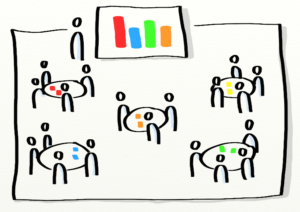 Large group retrospectives are long, large, unwieldy facilitations. So much so that they’re typically done only at the end of a project. Holding a 1-2 day retro every few weeks for a large project is neither practical nor responsible, but continually improving the project is also important. So, how do you hold light-weight retrospectives for large groups, while making sure that you:
Large group retrospectives are long, large, unwieldy facilitations. So much so that they’re typically done only at the end of a project. Holding a 1-2 day retro every few weeks for a large project is neither practical nor responsible, but continually improving the project is also important. So, how do you hold light-weight retrospectives for large groups, while making sure that you:
- Have a common understanding
- Identify issues and strengths
- Reach a group agreement on action points
- Ensure that the group feels that they received a high return on time invested
This retrospective combines different techniques and technologies to achieve these results.Continue reading
Constellation retrospective
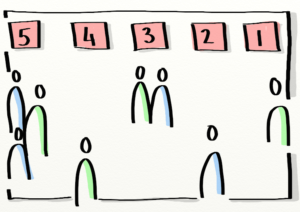 This is a strong retrospective for bringing issues up to the surface. Instead of just one person expressing an issue as a positive or a negative, the whole team feedbacks about the importance of the issue. The team then decides which issues to tackle. The retrospective also exposes issues where there is not common view, and highlights areas of alignment. It also allows the team to ask tough questions in a safe environment.Continue reading
This is a strong retrospective for bringing issues up to the surface. Instead of just one person expressing an issue as a positive or a negative, the whole team feedbacks about the importance of the issue. The team then decides which issues to tackle. The retrospective also exposes issues where there is not common view, and highlights areas of alignment. It also allows the team to ask tough questions in a safe environment.Continue reading
CYNEFIN på svenska
Har nött och blött en översättning av CYNEFIN på svenska. Så här ser det ut just nu: Kom gärna med förslag på förbättringar!
Continue readingNew Jimmy Cards in the making – Blue and Black Deck
Note: Access to Google Docs and Feedback has been disabled.
Back in 2013 I created a deck of cards with questions for the agile team, called “Jimmy Cards”. The questions on the cards were designed to ignite exciting discussion for teams to get to know each other and grow as a team.
I’ve received so much great feedback and appreciation over the years since. This feedback inspired me to create two more decks, the Black Deck and the Blue Deck. The Black Deck is for mature agile teams. The Blue Deck for leadership teams.
These have been in the working for over a year now but now I feel it’s time I wrap up my work and print them. I’m however not confident on the level of quality just yet, so this blog is a plead for help.
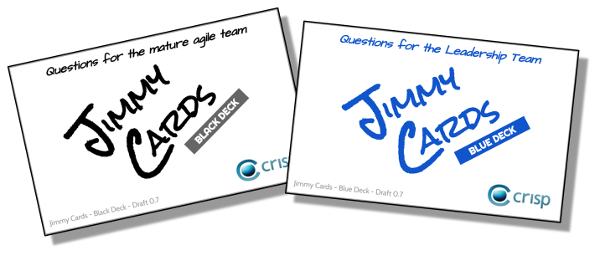
What makes your team tick
You have a team member who has a pressing issue. It’s the single most important thing that they need to resolve. They explain the problem to a coworker, suggest a solution and ask for support… and all they get is a tepid response. This is a situation that repeats itself across workplaces every day. There are many reasons why people refrain from helping. They might not have the competence, they might disagree with the solution/problem or maybe they just don’t have the time. But what happens when they have the competence, agree with the assessment and could easily make time, but choose not to? Why don’t they? How do you help your team navigate these situations?
The different roles in an agile team
When creating a team meant to work in an agile setting, most people remember that there are supposed to be more people in it than developers. They might skim through the Scrum Guide and fill the roles of Product Owner and Scrum Master. What few do is to think about what other roles that are really needed.Continue reading
My Testing Philosophy
Testing is a topic covered with mysteries and misunderstandings. Some people believe that testing is simply a verification of a specification. Others rely on a false assumption that everything can be automated and there is no need involving test engineer into anything else than writing automated scripts. Many think that quality is a responsibility of only a few folks in the company and should not bother the rest.
My views are different to the ones stated above, as my expectations on testing are alike to other engineering disciplines, for example, programming.
On high level I am following 3 main principles:
- Testing is a creative activity.
- What can be automated should be automated.
- Quality is everyone’s responsibility.
Effective carbon offsetting – what we’ve learned and what we’re doing
Flying causes global warming. That sucks. But neverthless, we fly sometimes. Conferences, vacations, business trips. So what can we do? Well, here’s a simple rule of thumb:
- Fly as little as possible. Reduce the frequency & distance. Consider train for shorter trips.
- When you do fly, make sure you carbon offset. From wikipedia: “A carbon offset is a reduction in emissions of carbon dioxide or greenhouse gases made in order to compensate for or to offset an emission made elsewhere.”
The obvious question then is – HOW do you carbon offset? I was surprised when I dug into it. “Traditional” carbon offsetting (buying emission credits and things like that) seems pretty useless! I couldn’t find any credible evidence that it makes a real difference! Almost like a scam.
So is there another way to carbon offset? Yes! This chart summarizes some of what I’ve learned so far. Read on for details. Got any more suggestions? Add comments. But please quantify.
UPDATE (Jan 2018): We’ve created a service to provide effective carbon offsetting. Check out GoClimateNeutral.org
(see this spreadsheet for the underlying numbers)Continue reading
Security Test-Driven Development – Spreading the STDD-virus
Agile development with short release cycles have been here for a while now. Most of us want fast feedback loops and many even Continuous Delivery with changes in production software everyday. However, most of us also want secure software and the question is: Can security engineering keep up the pace? A fast feedback that your production website has been hacked is not so nice.
Security is a quality attribute of your software, just like performance. If you don’t want to be surprised by bad performance in production, what do you do? You test and design for it of course and you preferably do so continuously from the start.
In my experience, the same however cannot be said of security. It is very often relegated to a once a year penetration-test activity. Not really an agile way of working is it? Not a secure one either since untested software is released as often as everyday. There must be a better way of working which allows us to both work in an agile way and to verify security on the way.
In the security field people like Gary McGraw have long been advocating ways of “Building Security In”. The Microsoft MVP Troy Hunt also proposes that you should “Hack yourself first”, instead of just waiting for the pentesters. Shouldn’t it be possible to weave these security activities into the process the same way as it is possible with normal testing activities using TDD? Indeed I, as well others believe it is so. Let’s look at how small extensions to an agile process can work in this direction.
Extending Sprint planning to deal with security
To start off you must first know what the requirements are. In a normal agile project this is done by eliciting User Stories from the customer or the Product Owner.
Let’s take an example of an online e-Commerce site. A User Story might be “As a customer I want to be able to add a review of a product so that information about products can be shared between customers”.
This works very well for traditional functional requirements, but for non-functional requirements a little extra thought is needed. In the case of security requirements it is often useful to state a requirement in a scenario that should NOT happen. In our case we shall call these scenarios “Abuser Stories”. These stories are non-technical descriptions of bad things you want to make sure you avoid. An Abuser story for this site might be:
“An attacker uses the Review Product-function to spread malicious Javascript”. Another might be: “An attacker abuses the Review Product-function to gain unlimited access to the database”.
A Product Owner might not be able to come up with these stories himself, but might need the help of a security engineer to help him with finding these threat scenarios.
The Training Deck – how to onboard a new team member faster
There will always be a productivity dip for the team when a new member joins. The question is not if it is going to happen, but how much will productivity dip and for how long. Imagine if you could onboard new team members with a minimum of productivity loss.
Slides from “Passion for projects 2017”
Today I met a crowd I do not bump in to all that often; project managers. I decided to share insights from Agile projects, stretching from Hospitals to Digitilization, how they simplified and speeded up their pre-studies. Learning how to do so well, helps avoiding the “we have to speed up implementation, to make up
Continue readingExplaining the DevOps Hype
I recently did a deep dive into DevOps to create a DevOps Foundation training. I thought it would be an uneventful journey, but while doing some research to complement my own experience I uncovered something much bigger than what I was prepared for. As if there suddenly was this major unavoidable thing popping up in
Continue readingDoing Scrum with Multiple Teams: Comparing Scaling Frameworks
Our article about Scaled Scrum has been published on InfoQ. In the article we describe the basics of LeSS, SAFe, and Scrum@Scale and show the similarities and differences between them You find the article about Scaled Scrum at InfoQ. Enjoy!
Continue readingNivåer av ledarskap
Efter ha läst boken “Leadership Agility” av Bill Joiner och Stephen Josephs har mina verktyg att hantera utmanande situationer i min coaching utökats.
Ledarskap kopplad till Piagets utvecklingsteori
Underlaget till boken “Leadership Agility” är mångårig forskning kring ledarskap kopplad till Piagets utvecklingsteori.
Enligt den genomgår barnet och sedan den unge vuxne ett antal mognadssteg och man kan också klassificera ledarskap utifrån var individen är i denna mognadsprocess. För mig har det varit och är en modell som jag har stor nytta av i min coaching.
10 Tips on How To Best Start your Kanban Journey
Are you thinking to start using Kanban but are unsure how and where to start? Here are 10 tips to help you get going on your Kanban journey! 1. Start with a small “Team” An easy way to gain experience with Kanban is to introduce it to a team that already delivers a well-understood
Continue readingThe iZettle Example: Decentralized Tech Development In Practice (Case Study)
Don’t stand in the way of great employees.
That’s one of the operational mantras that guide the finance technology company iZettle.
Two others are “Keep the startup spirit strong” and “Stay adaptable to changing market needs.”
In this blog post, we share some of the things we are implementing and tweaking at iZettle to keep producing great results and attracting in-demand, talented developers. My role has been to assist the tech development organization in making this work.
(Another blog post coming soon will cover the transformation of making the whole company agile, while this post focus on the practices that are put in place to keep a high performing, decentralized tech development organization at iZettle.)
Let’s begin by facing the reality of fast-growing startups.
The organizational challenges for most fast-growing startups
Most startups want a flat organization to keep their entrepreneurial juices flowing, but when new employees join in a steady stream there eventually comes the point where the founders or upper management feel overwhelmed by chaos.
Things get confusing.
Employees aren’t seen.
No one seems to know what’s going on.
What usually happens for most start-ups at this point is that bureaucracy processes start piling up. Layers of management are added, and project managers are introduced to coordinate the chaotic environment. And so are written reports for managers to send to upper management, and silos are building up between different departments. And decisions are taken somewhere else.
And then what happens?
Usually, entrepreneurial enthusiasm suffers and so does talent motivation and speed of innovation.
And that is exactly what iZettle wants to prevent.
But that is easier said than done when a company grows like a wildfire.











